Is your refrigerator no longer cooling properly after leaving the door open?
Discover the surprising reason behind this common issue and learn how to tackle it effectively.
In this article, we will delve into the science of refrigeration, explore the consequences of an open refrigerator door, and provide troubleshooting tips to restore cooling.
Say goodbye to warm milk and spoiled food as we unravel the mystery of why your refrigerator stopped cooling when the door was left open.
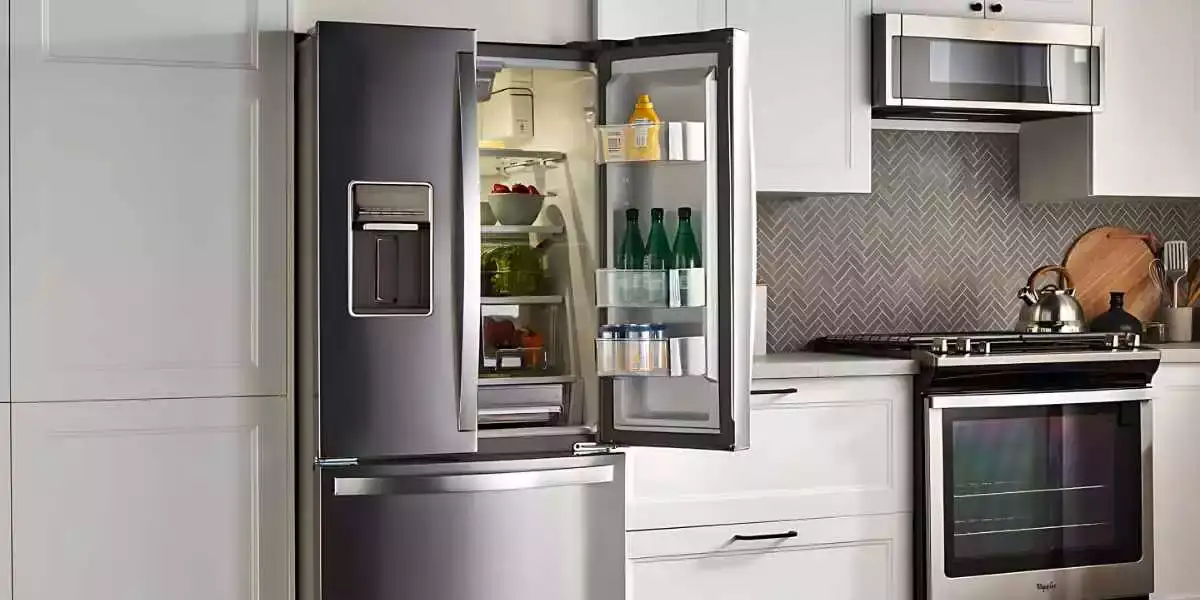
Why Did Your Refrigerator Stop Cooling When the Door Was Left Open?
When you leave the refrigerator door open, you disrupt the delicate balance of temperature and airflow inside.
This disrupts the refrigeration process, causing the cooling system to struggle and ultimately fail.
The Impact of Leaving the Refrigerator Door Open
By understanding the impact of leaving the refrigerator door open, you can take proactive measures to minimize these effects:
Step 1: Increased Energy Consumption and Inefficiency
Leaving the refrigerator door open has a significant impact on energy consumption and efficiency.
When you leave the door open, warm air from the surroundings enters the refrigerator, causing the internal temperature to rise.
To compensate for the increased temperature, the cooling system works harder and consumes more energy.
This leads to higher electricity bills and puts unnecessary strain on the refrigerator’s components, decreasing its overall efficiency.
Step 2: Uneven Cooling and Potential Food Spoilage
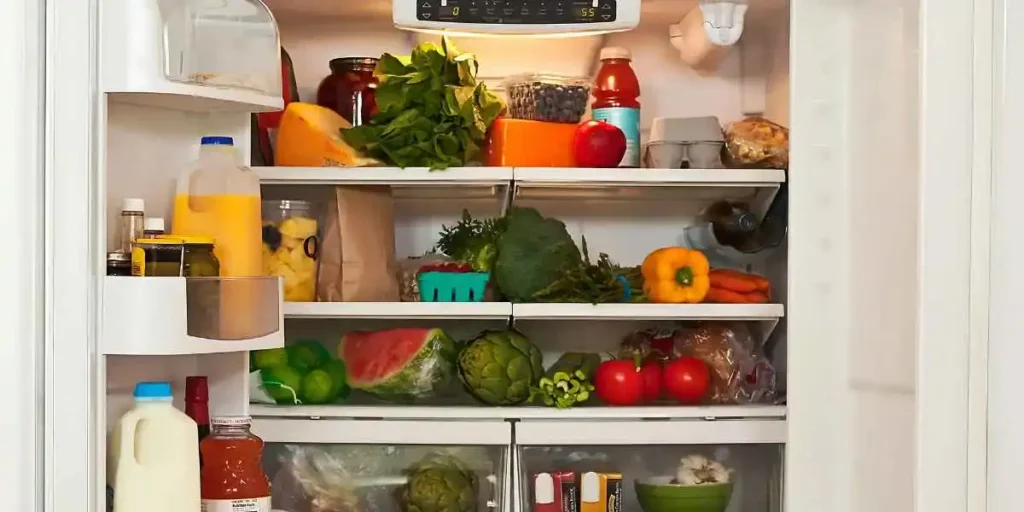
An open refrigerator door disrupts the airflow and temperature distribution inside the unit.
The warm air that enters can create pockets of higher temperature, causing uneven cooling.
As a result, certain areas of the refrigerator may not maintain the required low temperatures, potentially leading to food spoilage.
It’s important to note that perishable items, such as dairy products and meats, are particularly susceptible to spoilage when exposed to higher temperatures for extended periods.
Step 3: Frost Build-up and Ice Formation
Leaving the refrigerator door open can also contribute to frost build-up and ice formation.
The warm air that enters the refrigerator causes moisture to condense and freeze on the cooling coils and other surfaces.
Over time, this can lead to excessive frost accumulation and hinder the refrigerator’s cooling capacity.
Additionally, the presence of excess frost requires the refrigerator to work harder to maintain its temperature, further increasing energy consumption and reducing efficiency.
Step 4: Strained Compressor and Potential Damage
The compressor is a vital component of the refrigerator’s cooling system. When the door is left open, the compressor has to work continuously to compensate for the warm air influx.
This constant operation places a significant strain on the compressor, potentially leading to premature wear and damage.
A damaged compressor can result in decreased cooling performance and may require costly repairs or replacement.
Step 5: Increased Risk of Freezer Malfunction
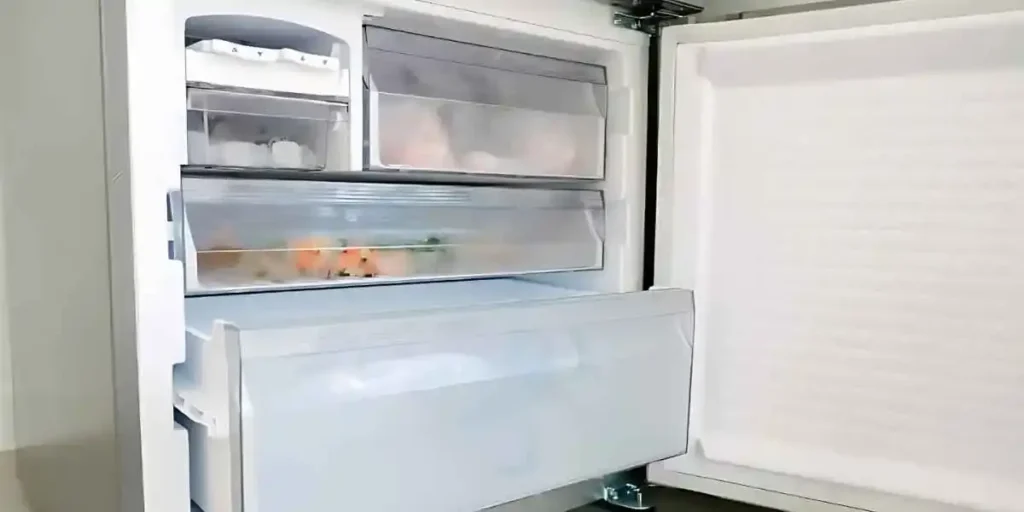
Leaving the refrigerator door open not only affects the refrigerator compartment but also impacts the freezer.
The warm air that enters the freezer can cause the temperature to rise above freezing point, jeopardizing the preservation of frozen foods.
Moreover, the increased workload on the freezer’s cooling system can lead to decreased efficiency and a higher likelihood of freezer malfunctions.
Risks Associated with an Open Refrigerator Door
Understanding and being aware of the risks associated with an open refrigerator door is crucial for maintaining optimal performance and preventing potential issues:
Step 1: Increased Energy Consumption and Higher Electricity Bills
Leaving the refrigerator door open poses a significant risk of increased energy consumption.
When you leave the door open, warm air enters the refrigerator, causing the cooling system to work harder to maintain the desired temperature.
This leads to higher electricity bills as the refrigerator consumes more energy to compensate for the heat influx.
By being mindful of keeping the door closed you can minimize this risk and save on energy costs.
Step 2: Potential Food Spoilage and Waste
One of the major risks of an open refrigerator door is the potential for food spoilage.
When warm air enters the refrigerator, it raises the internal temperature, creating an environment that promotes bacterial growth.
Perishable items, such as dairy products, meats, and vegetables, are particularly vulnerable to spoilage.
Consuming spoiled food can lead to health issues, and it also results in unnecessary food waste.
By promptly closing the refrigerator door, you can help maintain food freshness and reduce the risk of waste.
Step 3: Uneven Cooling and Temperature Fluctuations
An open refrigerator door disrupts the airflow and temperature distribution inside the unit.
This can lead to uneven cooling and temperature fluctuations throughout the refrigerator.
Certain areas may become warmer than others, compromising the freshness and quality of stored items.
To ensure consistent and optimal cooling, it is crucial to minimize the duration of door openings and maintain a properly sealed refrigerator door.
Step 4: Frost Build-up and Impaired Efficiency
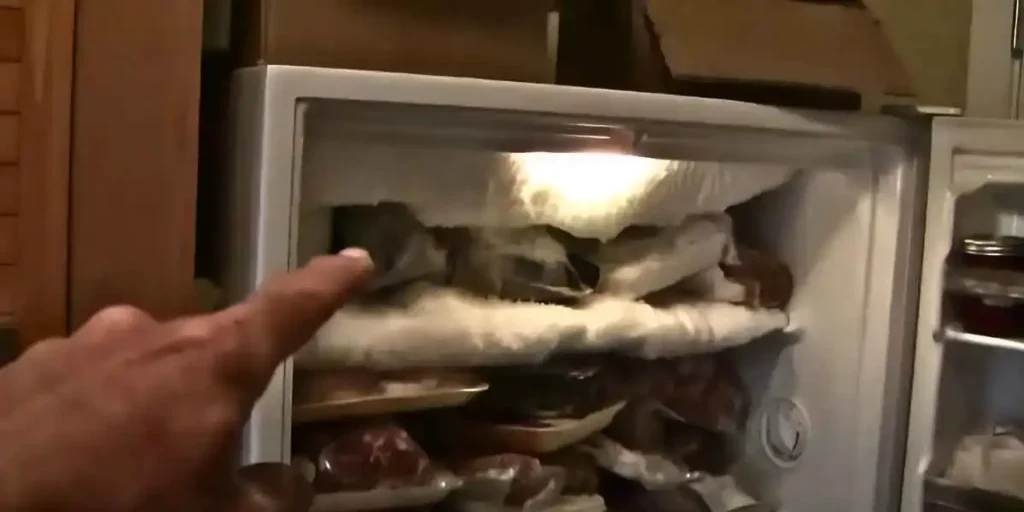
When warm air enters the refrigerator, it can lead to the formation of frost on the cooling coils and other surfaces.
Excessive frost build-up not only affects the efficiency of the refrigerator but also poses the risk of impairing its cooling capacity.
The presence of excess frost requires the refrigerator to work harder to maintain its temperature, resulting in increased energy consumption and decreased overall efficiency.
Regularly defrosting the refrigerator and keeping the door closed can help mitigate this risk.
Step 5: Strain on Refrigerator Components and Potential Damage
Leaving the refrigerator door open places unnecessary strain on its components, particularly the compressor.
The compressor is responsible for cooling the refrigerator, and prolonged exposure to warm air can cause it to overwork and potentially lead to damage.
A damaged compressor may result in reduced cooling performance, increased energy consumption, and the need for costly repairs or replacement.
By avoiding prolonged open-door situations, you can help extend the lifespan of your refrigerator and prevent component damage.
How to Prevent Cooling Issues Caused by an Open Refrigerator Door?
Step 1: Be Mindful of Door Openings
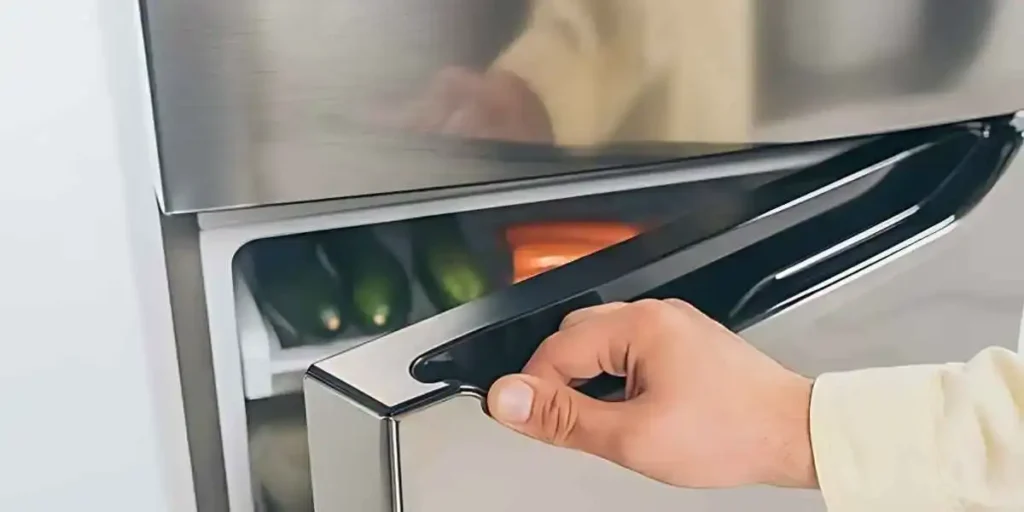
To prevent cooling issues caused by an open refrigerator door, it’s crucial to be mindful of how often and how long you keep the door open.
Every time you open the refrigerator door, warm air from the surrounding environment enters, causing the cooling system to work harder to maintain the desired temperature. To minimize this effect:
- Assess your needs before opening the door: Take a moment to think about what you need from the refrigerator before opening the door. This way, you can retrieve all the items you require in a single visit, reducing the frequency of door openings.
- Avoid leaving the door open for extended periods: It’s essential to limit the time the refrigerator door remains open. The longer it stays open, the more warm air enters, which can lead to temperature fluctuations and strain on the cooling system. Make a habit of closing the door promptly after retrieving or storing items.
Step 2: Check Door Seals Regularly
The effectiveness of the door seals, or gaskets, is vital in maintaining the cooling efficiency of your refrigerator.
Damaged or worn-out seals can result in air leakage, causing the cooling system to work harder to compensate. To prevent this issue:
- Inspect the door seals: Regularly examine the condition of the door seals for any signs of wear, cracks, or tears. Check both the refrigerator and freezer door seals. If you notice any damage, it’s important to replace them promptly to ensure a proper seal.
- Test the effectiveness of the seals: To determine if your door seals are functioning correctly, perform a simple test. Close the door on a dollar bill or a piece of paper, and then try to pull it out. If you can easily remove the bill without resistance, it indicates a need for new seals.
Step 3: Clean the Door Seals
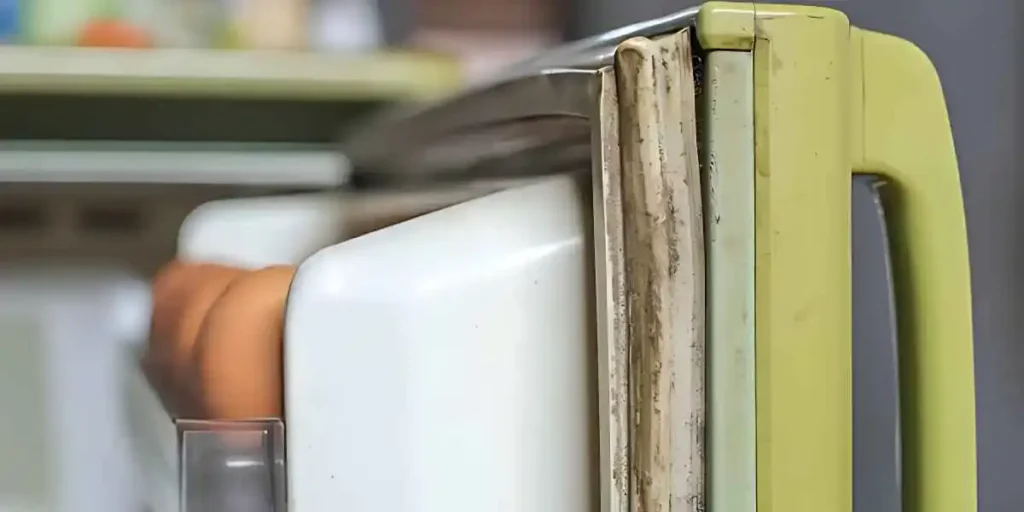
Keeping the door seals clean is essential for optimal performance. Over time, dirt, grime, and food particles can accumulate on the seals, compromising their effectiveness. To maintain clean door seals:
- Wipe the seals regularly: Use a damp cloth or sponge to wipe the door seals thoroughly. Pay close attention to the areas where the seals make contact with the refrigerator frame. Remove any debris or residue that may hinder a proper seal.
- Use a mild cleaning solution if necessary: If the seals are particularly dirty or sticky, you can use a mild cleaning solution, such as a mixture of warm water and mild dish soap. Apply the solution to the cloth or sponge and gently clean the seals. Rinse with a damp cloth to remove any soap residue and dry the seals thoroughly.
Step 4: Adjust Door Alignment
A misaligned refrigerator door can create gaps that allow cool air to escape, leading to cooling issues. To ensure proper door alignment:
- Check door alignment: Stand in front of your refrigerator and observe the alignment of the doors. They should be level and close tightly when closed. If you notice any gaps or unevenness, it may indicate a need for adjustment.
- Adjust the door alignment if necessary: Depending on the model of your refrigerator, you may need to consult the manufacturer’s instructions to adjust the door alignment. In some cases, you can use a wrench or screwdriver to loosen or tighten the hinges. Make small adjustments and check the alignment after each modification until the doors are level and close securely.
FAQs
1. How Long Does It Take For A Refrigerator To Stop Cooling If The Door Is Left Open?
The time it takes for a refrigerator to stop cooling varies depending on various factors such as the ambient temperature, refrigerator model, and the duration the door remains open.
In general, a significant drop in cooling effectiveness can occur within a couple of hours of leaving the door open.
2. What Should I Do If I Accidentally Left The Refrigerator Door Open?
If you accidentally left the refrigerator door open, promptly close it to prevent further warm air from entering. Allow the refrigerator some time to cool down, and check if the cooling performance returns to normal.
If not, follow the troubleshooting steps or contact a professional technician if needed.
3. Can Leaving The Refrigerator Door Open Cause Permanent Damage?
Leaving the refrigerator door open for an extended period can strain the cooling system and affect its long-term performance.
While it may not cause permanent damage in most cases, it’s important to address the issue promptly and take steps to optimize the cooling efficiency to prevent further problems.
4. What Are The Signs That My Refrigerator Is Not Cooling Properly After Leaving The Door Open?
If your refrigerator is not cooling properly after leaving the door open, you may notice warmer temperatures inside the refrigerator, melting or thawing of frozen items, or an increase in food spoilage.
Additionally, the refrigerator may run continuously or make unusual noises.
5. Should I Reset My Refrigerator If It Stopped Cooling After The Door Was Left Open?
In some cases, resetting the refrigerator can help restore cooling functionality. Refer to the manufacturer’s instructions on how to reset your specific refrigerator model.
However, if resetting doesn’t resolve the issue, it’s advisable to perform troubleshooting steps or seek professional assistance.
Conclusion
Ensure optimal cooling performance by being mindful of leaving the refrigerator door open for extended periods.
Warm air entering the refrigerator strains the cooling system, leading to reduced cooling efficiency or a complete halt in cooling.
Take prompt action to close the door, allow the refrigerator to cool down, and follow the suggested steps to prevent further issues.
Keep your refrigerator running smoothly and efficiently by practicing good door management habits.
